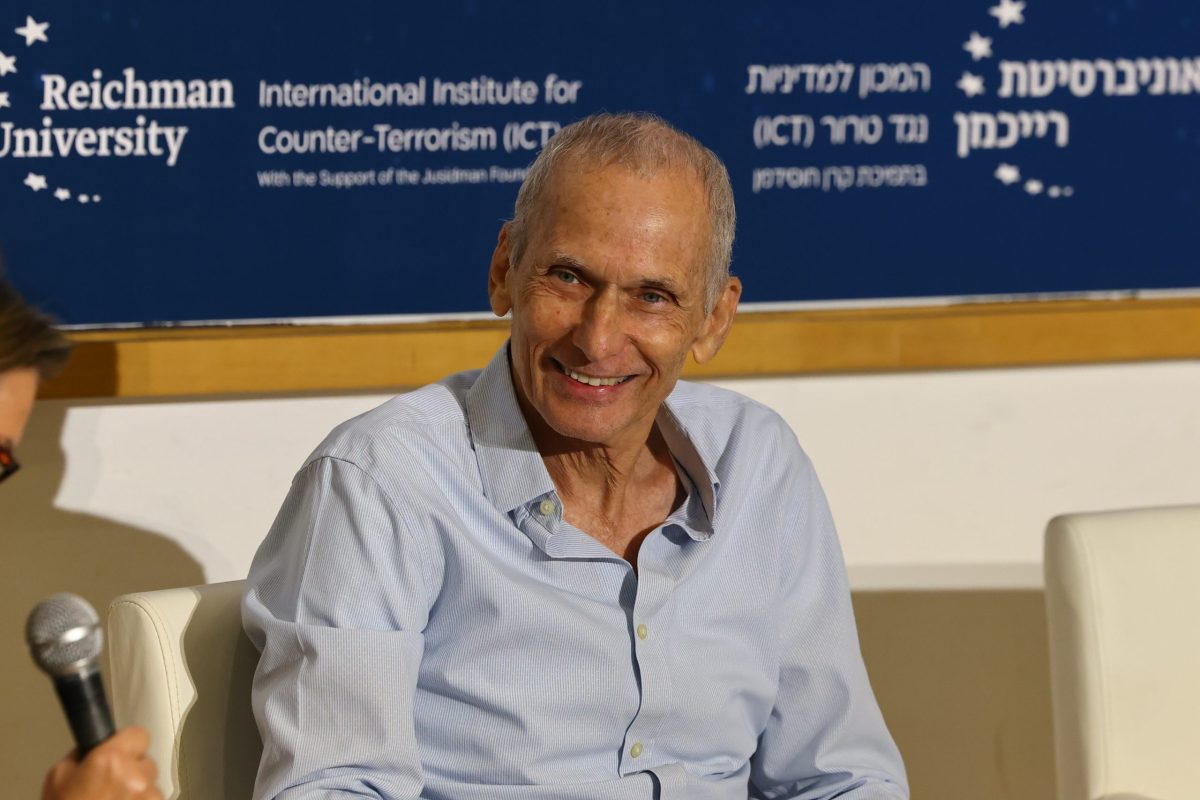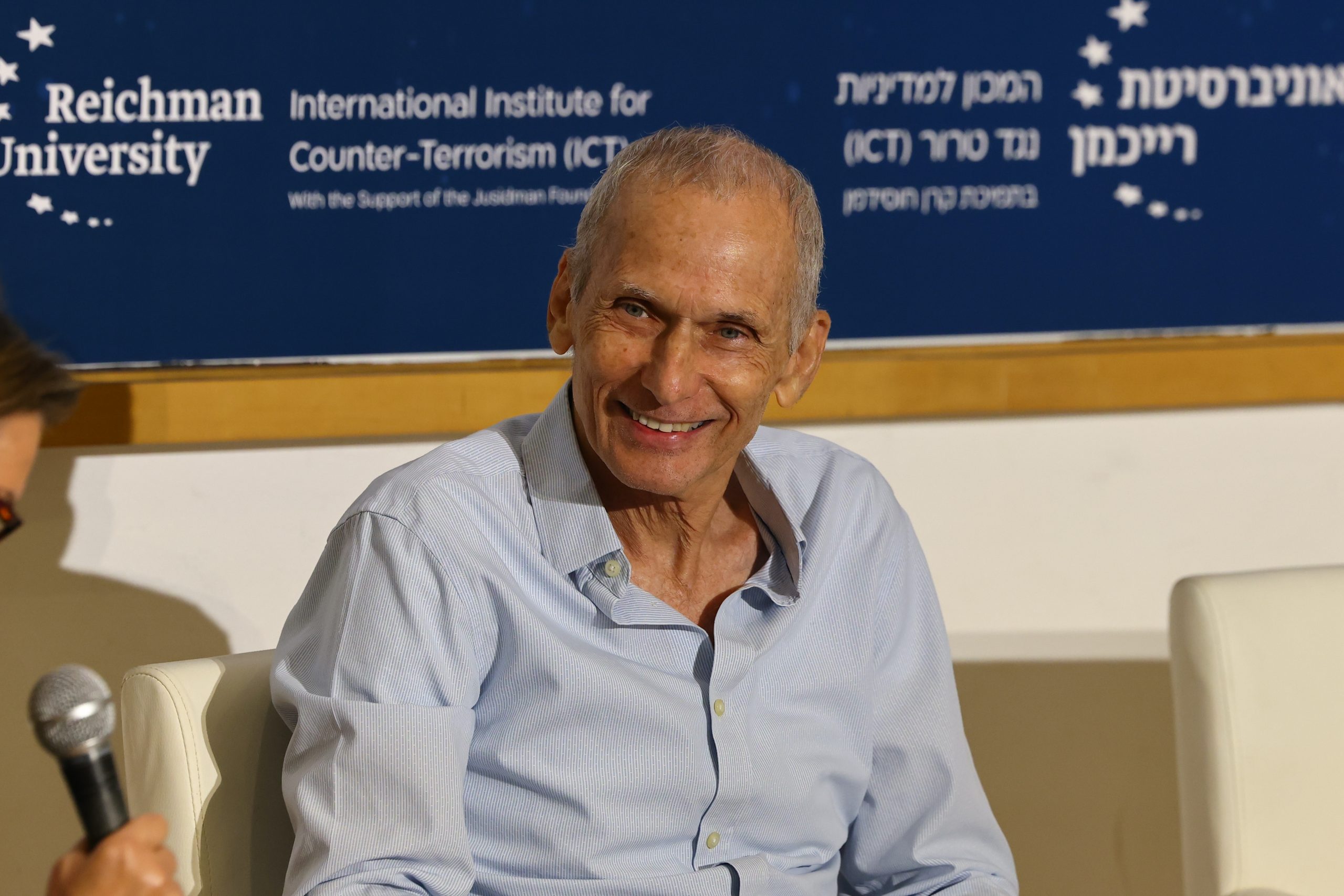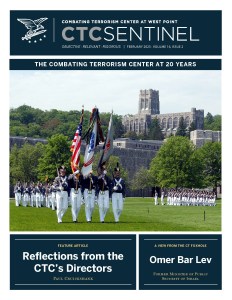
Col. (Res.) Omer Bar Lev served as Israel’s Minister of Public Security in Israel’s previous government between 2021 and 2022. Bar Lev began his Knesset career in February 2013 when he represented the Labor Party in the 19th Knesset. Prior to entering politics, Minister Bar Lev enjoyed a long career as an entrepreneur and CEO of several Israeli high-tech companies, primarily in the medical and defense fields. Before that period of his life, he served as the commander of the IDF’s Special Forces. Early in the 1990s, Bar Lev served as a member of the IDF’s delegation for negotiations between Israel and the PLO and took part in the negotiation of the 1994 peace agreement with Jordan. He is currently a senior fellow at the International Institute for Counter-Terrorism (ICT) at Reichman University.
Editor’s Note: This interview is the third in a series of articles and interviews examining the terrorist threat landscape in Israel and the lessons other countries can learn from Israel’s counterterrorism efforts. The series, launched in June 2022, is a joint effort between the Combating Terrorism Center at West Point (CTC) and the International Institute for Counter-Terrorism (ICT) at Reichman University in Israel.
CTC/ICT: You served as Minister of Public Security until late 2022. What were the main challenges you faced? More specifically, considering the late January 2023 terrorist attacks in Jerusalem, including the shooting attack outside a synagogue,1 and the volatile situation in the north of the West Bank,2 what is your assessment of the current situation, and what are the lessons learned from the spring 2022 terror wave in Israel,3 if any?
Bar Lev: I took office a little over a month after Operation Guardian of the Walls.a I do not want to make any generalization, but at that time, the violence on the ‘Arab street’ was my number-one challenge. First to stop its expansion and second to reduce it. Simultaneously, I also had to deal with Arab riots in mixed cities and the south of Israel (and to a much lower degree, riots by Jewish extreme right-wingers).b These, a by-product of Guardian of the Walls, were a strategic surprise for all of Israel’s law enforcement and intelligence agencies as well as the government and the public at large. Therefore, my equally important challenge was to prepare to prevent [another wave of] such violence in case a similar situation were to develop in the future (i.e., a round of hostilities that spills into internal riots in Israel), so that we would be in a position to suppress it in a shorter time frame than it took us in 2021 (between 72-100 hours). A third and ever-present challenge was contending with the series of terrorist attacks that intensified.
It should be noted, all of the above dynamics influence and feed one another. In hindsight and given the short time frame I was in office, I am happy that we were effective in contending with these challenges. In addition, the crime statistics in the Arab society are a testament to that. The number of murders dropped from 126 in 2021 to 106 in 2022; the number of confiscated illegal weapons increased by 50 percent for handguns and 80 percent for long barrel guns. This represents a loss of tens of millions of ILS [Israeli new shekels] to the criminals who trade in illegal guns. The number of indictments also rose by dozens of percentage points, etc. The last year shows clearly measurable, quantifiable improvement on all fronts and in all sectors of the Israeli society.
That said, restoring the sense of personal security for Israeli citizens is a long process that must start with demonstrating that we are restoring security on the streets, and the first to feel the positive effect of what we did were the Israeli Arabs. In addition to what we did on the ground, we also initiated legislation changes (e.g., minimum sentence for illegal weapons offenses).
Another part of the equation shows that creating deterrence and restoring governability is not the sole domain of the Ministry of Public Security. We need legislation (minimum sentencing) and actual court sentencing because a sentence that does not deter the criminal is ineffective. Regarding the riot scenario that materialized during Operation Guardian of the Walls, it was clear to me that the Border Patrol is and should be the National Guard. Unlike the U.S., in Israel the Border Patrol is integrated into Israeli Police and therefore having the police commissioner as the commander of the Border Patrol makes a lot of sense. To contend with riots such as the ones that occurred during Operation Guardian of the Walls, we need two elements: assuming the riots erupt without a prior warning, the “blue” cops provide first response, and every police district will do that within the borders of its sector and for that we built an orderly plan wherein the field officers will be reinforced by officers currently in office/admin positions. While they are holding the line, the Border Patrol will mobilize and step in.
That said, it should be noted, the Border Patrol has three “legs” (active-duty officers, reserve officers, and volunteers). In the 2022 budget, we added 300 active-duty officer positions, and during the year, we added another 200 positions to a total increase of 17 percent of the active-duty troops. Further, on the eve of Guardian of the Walls, we had 16 Border Patrol companies of which eight were equipped and eight did not have enough equipment. During 2022, we built and budgeted a plan to first equip the above eight companies and add over three years another 26 companies. The third “leg” is the Border Patrol volunteers, which are active mostly in the rural parts of the country and currently stand at about 7,000-strong. These volunteers will have their full gear at home so that within six hours they can be with their company where they are needed. We were able to accomplish that as well.
With the above reorganization, we were able to cut down dramatically on the time it should take the Border Patrol to intervene and quash riots that erupt without prior warning.
The example for the success of the above strategy was during Operation Breaking Dawnc that started just before Tisha B’Av.d In preparation for the holiday, which usually sees a large number of Jews going to the Temple Mount, I deployed the “blue” police to prevent potential riots and activated 10 Border Patrol Reserves companies.
CTC/ICT: In early February 2023, the CIA Director William Burns stated, “I was a senior US diplomat 20 years ago during the Second Intifada, and I’m concerned — as are my colleagues in the intelligence community — that a lot of what we’re seeing today has a very unhappy resemblance to some of those realities that we saw then too.”4 What is your assessment of the risk of a third intifada?
Bar Lev: Each intifada has its own characteristics. The First Intifada was very different from the Second Intifada and probably the third intifada will be different from the previous ones. As such, it will take some time before it is recognized and acknowledged.
Some are saying that we are already in the beginning of the third intifada, and maybe they are not mistaken. Whether or not it’s obvious that we’re there yet, we are getting closer and closer to it, and it is only a question of when we will be there and recognize it.
CTC/ICT: What is your view on the role of technology in today’s policing and counterterrorism?
Bar Lev: In essence, the role of technology is to have a more efficient use of manpower (e.g., sending out a drone to monitor a territory is far more efficient than to send a police officer to do the same work; sophisticated traffic cams are better solution than posting a police officer 24/7). In the case of cameras, a major concern is of course the invasion of privacy (either with the photograph itself or the storage and use of the information on it within the police databases, as is evidenced by several court cases); however, the issue of privacy and human rights applies to other technological means such as wiretapping, etc. As technology moves at a much faster pace than legislation, there should also be clear guidelines as to the implementation of the technology in a manner that will not infringe on human rights even if the legislation is not yet in place.
Another technological advancement of concern is connected to the struggle for perception—for example, the rapid spread of fake news on social media that can incite or disrupt public order. To contend with that, we established a “Perception Center” in Jerusalem whose job is to identify such cases and respond to them in real time, which is the key here. For example, a Palestinian terrorist tried to kill an innocent person in Jerusalem and was killed by police rushing to the scene. Some Palestinian social media groups tried to establish a narrative that Israeli police killed an innocent Palestinian (even though the entire terrorist attack was videotaped). In this case, the perception center identified the full video showing the entire attack (from CCTV and other sources) and posted the entire attack on social media to refute the claims from those Palestinian social media groups. Another example was when Hamas posted there were riots in the Damascus Gate vicinity, but in reality, nothing was happening so the center posted a live stream from the area to social media to refute the claim.
Other systems are monitoring open-source information to identify and isolate potential terror attackers and/or public order disruptions, etc.

CTC/ICT: How has the relationship between the Ministry of Public Security and other security agencies, such as the Israel Defense Forces (IDF) and the Israel Security Agency ([ISA, aka Shin Bet], evolved during your tenure?
Bar Lev: The more relevant relationship for the Ministry is with the ISA, and in this case, I am happy to say the relationship has greatly improved both on the tactic and strategic levels, especially the latter. Here too, the question is, how do we work together while respecting human rights? For example, I was scheduled to visit a certain Arab town, and during the preparation of the visit, the district commander had informed me that the mayor had ties to an organized crime family. The crime family was instrumental in discouraging potential political rivals from putting their names up for election, and this helped a particular candidate win the election. Now, in my eyes, this was a matter for the ISA as well because part of the ISA’s job is to protect Israel’s democracy and democratic state institutions. Such cases are not just criminal cases but also threaten the Israeli democratic institutions, and so I got them involved.
The relationship improved dramatically after the riots that occurred at the time of Guardian of the Walls because we all realized that we need to work closely with one another to avoid another surprise like we had. On a personal level, it also helped that the head of the ISA was one of my soldiers in the IDF, but the important thing is the institutional realization on both sides that a deeper cooperation is needed, all within the mandate of the ISA, the police, and [the] confines of the law.
Regarding the IDF, cooperation was very good but more technical in nature. For example, to add the Border Patrol companies I mentioned above, I needed the cooperation of the Minister of Defense because without his signoff, this could not have happened as he is the one authorized under the law to mobilize reserve troops. Also, we had a few waves of terrorist attacks, so I asked and received IDF troops to assist (not replace) police officers. And during that secondment, I insisted (and the Minister of Defense agreed) that the troops be under the command of and report to police officers. There is also close cooperation with regard to controlling the demarcation of the “green line”e in the sense that the police is in charge of law enforcement within the “green line” and the IDF is in charge of this within Judea and Samaria [the West Bank]. We also formed joint task forces on ad hoc projects (e.g., there is a Border Patrol company whose job is to handle weapons and ammunition thefts from IDF bases).
CTC/ICT: What is your assessment of the threat to Israel and Israelis posed by the Iran threat network (Hezbollah/pro-Tehran Iraqi Shi`a militias/Houthis)?
Bar Lev: Israel does not have any external existential threat, but the closest to one is the Iranian nuclear threat. At the time, I thought that the American withdrawal from the nuclear agreement was a mistake, and I still think so, as now the Iranians are a few months away from achieving nuclear capabilities. That said, going back to the original agreement would be another mistake in light of Iranian activities, and I am happy that the U.S. now realizes that as well. If we return to an agreement, it needs to be a stronger and more comprehensive one. I also would like to add that there is no doubt that the IRGC should be labeled as a terrorist organization.
We cannot predict what actions Iran will take with regard to its nuclear program, but what we do know is that strong cooperation with the U.S. is a key component in countering the Iranian threat network. There is a very positive aspect to the military cooperation with the U.S. as it serves two goals: first, we train together and prepare for a scenario that if and when it arises, we will be able to accomplish the mission together, and second, it serves as a deterrent to Iran. CTC
Substantive Notes
[a] Editor’s Note: Operation Guardian of the Walls was an IDF military operation launched in May 2021. The IDF stated that it destroyed 1,500 terror targets and that more than 4,400 rockets were launched from Gaza toward Israel by Hamas and the Palestinian Islamic Jihad (PIJ) during this cycle of hostilities. For more information, see “Operation Guardian of the Wall,” IDF, June 14, 2021.
[b] Editor’s Note: In May 2021, “a wave of mob violence between Jews and Arabs spread across several Israeli cities, leading to riots and attacks in the street.” Patrick Kingsley, “As Gaza War Escalates, New Front Opens in Israeli Cities,” New York Times, May 12, 2021.
[c] Editor’s Note: On August 1, 2022, the Israel Defense Forces (IDF) arrested the head of the Palestinian Islamic Jihad in the West Bank. PIJ threatened to retaliate, and the Israelis identified a direct threat from the terrorist group in Gaza. In response, the IDF launched Operation Breaking Dawn targeting the PIJ in Gaza. During the hostilities, PIJ fired hundreds of missiles toward Israel. After mediation from Egypt, a truce was reached between the two sides after three days of clashes. For more, see “Everything You Missed On Operation ‘Breaking Dawn,’” IDF, August 7, 2022, and Nidal Al-Mughrabi and Maayan Lubell, “Israel and Palestinian militants declare Gaza truce,” Reuters, August 9, 2022.
[d] Editor’s Note: Tisha B’Av is a fast day in the Jewish calendar that represents the destructions of the Temple in Jerusalem.
[e] Editor’s Note: “The Green Line is a term used to delineate the demarcation line between Israel, Jordan, Egypt and Syria from the period following Israel’s 1948 Independence War until the 1967 Six Day War when Israel captured the West Bank, and East Jerusalem from Jordan, the Gaza Strip from Egypt, and the Golan Heights from Syria. It is reportedly named for the green pen used by officers negotiating the armistice in 1949 to delineate the borders between the countries.” “Glossary Term: The Green Line,” Anti-Defamation League, May 3, 2022.
Citations
[1] “Jerusalem synagogue shooting: Israel arrests 42 after deadly attack,” BBC, January 28, 2023.
[2] “Nine Palestinians killed in Israeli raid in Jenin,” BBC, January 27, 2023.
[3] Editor’s Note: For more on this, see Boaz Ganor, “CTC-ICT Focus on Israel: What Can We Learn from the Spring 2022 Terror Wave in Israel?” CTC Sentinel 15:6 (2022).
[4] Jacob Magid, “CIA director: Current Israeli-Palestinian tensions resemble Second Intifada,” Times of Israel, February 7, 2023.
 Skip to content
Skip to content

